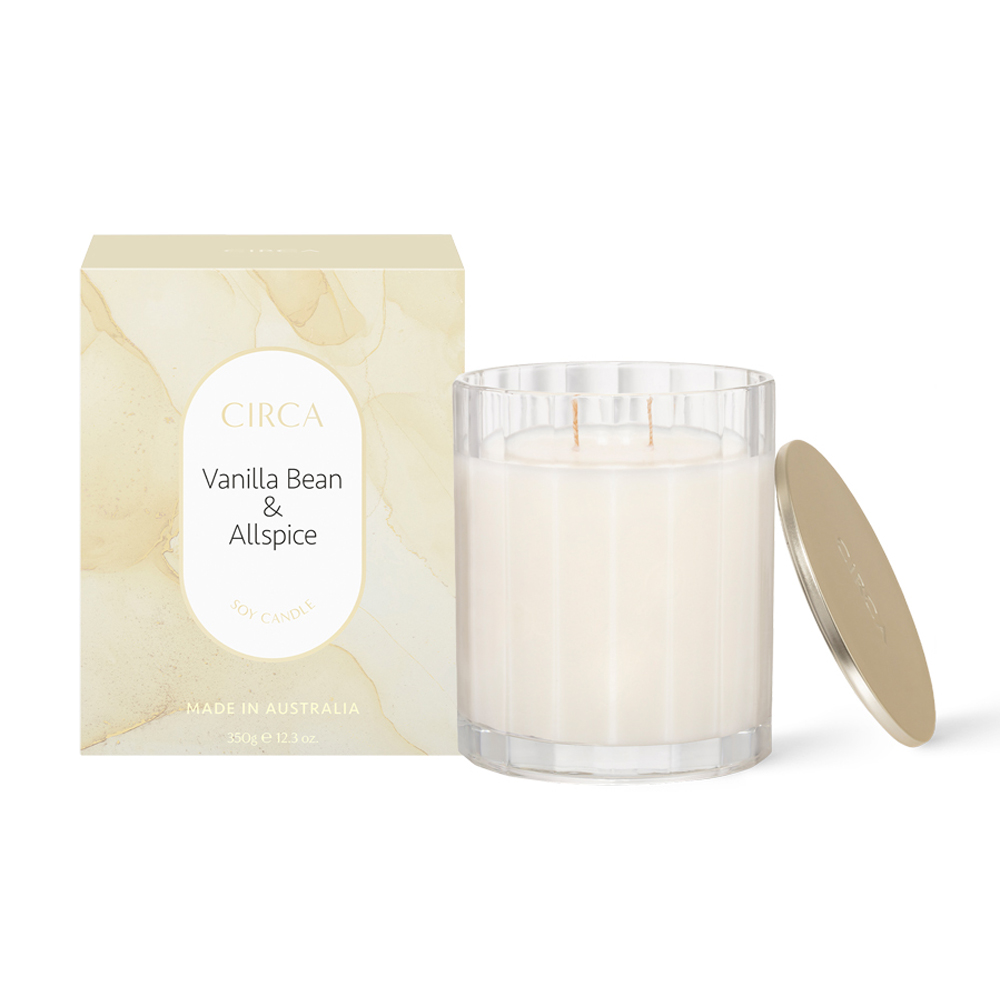Do you love candles but feel overwhelmed by the choice at your local store?
I’m not talking about the choice of scents (but to be fair, that can also be pretty overwhelming). No, I’m talking about the types of candles. Candles are made from all types of wax including soy, paraffin and beeswax. But what’s the difference between them?
We spoke to Nicole Eckels, Co-founder and Director of Glasshouse Fragrances and Circa Home, about the different types of candle wax. As it turns out, the difference between the types of candle wax is minimal, and the choice between them simply comes down to personal preference.
Soy candles
Soy wax is a non-toxic wax commonly used for candles. It is derived from a hydrogenated form of soybean oil. Nicole says: “There are no real benefits of soy – it comes down to personal preference.”
To get the most out of your soy candle, you must show it a bit of love. Re-centering wicks is the best way to maintain a burning candle. Ensure wicks are upright and trimmed to 7mm.
If soy candles are your ‘thing’, check out the Circa Home products. They provide a range of natural soy scented candles to suit different occasions and different areas of the house and if maintained correctly, they will last around 45-50 hours!
Paraffin candles
Paraffin wax is often given a bad rap, but it is the most widely used wax for candle making in the world. How does that make sense?
Nicole puts the negative view of paraffin wax down to a selling message that comes from the makers of other types of wax, rather than the facts based on the chemistry of wax. “There have been very few studies carried out on the subject, so it is difficult for consumers to get the information in order to make their own decision,” she says. One such study that was conducted at the Beyreuth Institute for Environmental Investigations in Germany concluded that all types of wax – including paraffin – burned in the same manner, creating comparable emissions, and posing no discernible risk to human health or indoor air quality.
Paraffin wax is not bad for you after all! In fact, it is a non-toxic wax approved by the U.S. Food and Drug Administration and is also commonly found in candy, ice cream coating and coating for hard cheese and skin care products.
If you are after high-quality paraffin wax candles, Glasshouse candles are made from non-toxic food grade wax with lead-free cotton wicks. Nicole points out that their candles are safe to burn, even in the presence of babies or those with allergies.
Like soy candles, the best way to maintain paraffin candles is to re-centre and trim the wick to 7mm. Regularly trimming the wick of your paraffin candle will ensure that is stops emitting carbon – the black residue that is sometimes found on the glass of your candle. If maintained correctly, Glasshouse candles may burn for up to 80 hours.
Beeswax candles
Beeswax is a natural material. It occurs in a range of colours – from creamy white, to pink, orange and even brown – depending on the flowers the bees have been foraging. Beeswax candles are the longest burning candle on the market, and can last up to 100 hours. For those who have a sensitive nose, they are a great option as they produce a subtle, honey fragrance. To maintain your beeswax candle, make sure the wick is straightened regularly, and trim it to 5mm after every burn.
“Candle manufacturers select waxes or blends of waxes based on their suitability for specific types of candles or formulation profiles, as well as their own candle-making preference,” surmises Nicole. We recommend you use the same discretion when choosing between soy, paraffin or beeswax candles yourself.
What’s your favourite type of candle wax and fragrance?








I do love a good triple scented soy candle. I thought they were supposed to be better??
Have no faves as do not buy them. Have given one and burned…but feel it ‘s unnecessary